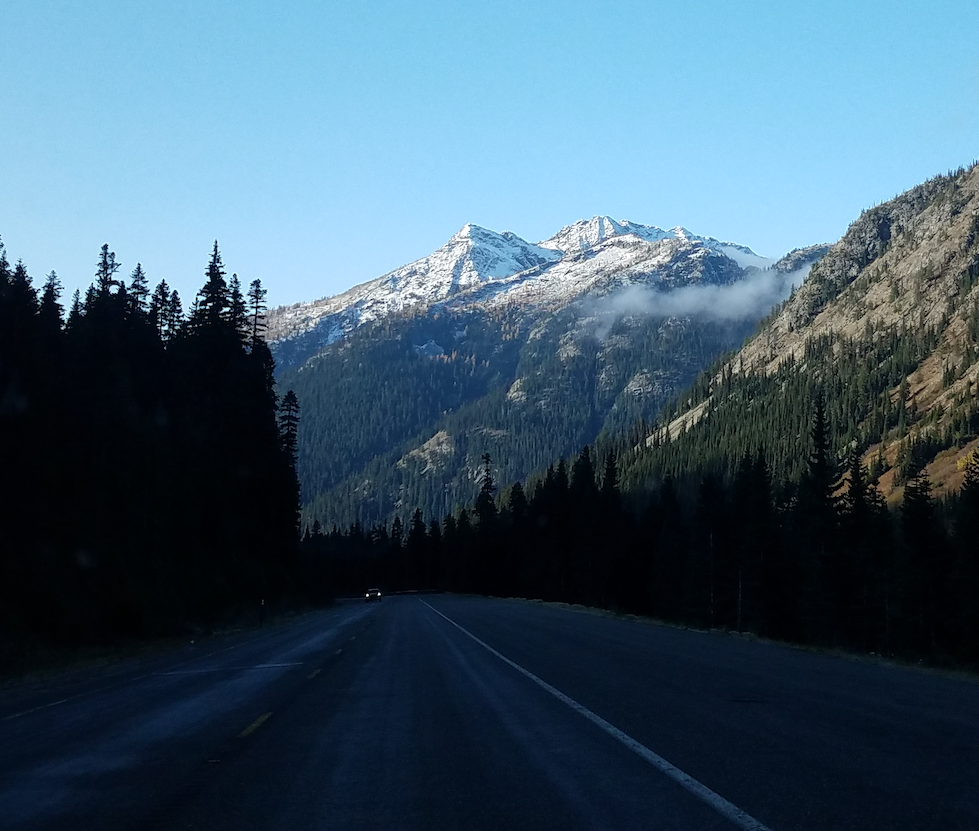
Grizzly Reintroduction Into North Cascades Appears To Be Moving Again
Federal governments on both sides of the North Cascades appear to be moving forward more seriously now with plans to reintroduce grizzly bears in the rugged border-straddling range.

A notice on the White House’s Office of Regulatory and Information Affairs website states, “[the U.S. Fish and Wildlife Service] will propose to establish a nonessential experimental population (NEP) of the grizzly bear (Ursus arctos horribilis) in the North Cascades Ecosystem, under section 10(j) of the Endangered Species Act. Wildlife and land managers in Canada are planning reintroduction of grizzly bears in the Canadian portion of the ecosystem. Establishment of this NEP would facilitate reintroduction of grizzly bear to the region while allowing for greater certainty and management flexibility, including allowable legal incidental taking of grizzly bear, within the NEP. FWS will engage with the public through scoping meetings during the proposed rulemaking and the NEPA processes.”
The news was first reported by Politico yesterday and it follows on a stop-start process that stretches across recent presidential administrations. The previous effort that looked at bringing the big bears back to the region fizzled out in 2020, during the waning days of the Trump Administration, when the Department of Interior quit working on the project, and then last November it was taken up again by the Biden Administration’s National Park Service and USFWS.
“The best available data indicate that reintroduction of the grizzly bear into the North Cascades Ecosystem is biologically feasible and will promote the conservation and recovery of the species consistent with the overall grizzly bear recovery strategy,” states the Office of Regulatory and Information Affairs.
Politico reported that given the completion of the White House review, the rollout of a draft environmental impact statement is “expected soon.”
“The two agencies have been working on the draft EIS that will feature several alternatives for grizzly bear restoration (including a no action alternative), as well as the proposed 10(j) rule that would allow for greater management flexibility and additional managements tools,” stated Andrew Lavalle, a USFWS spokesman at the Washington state office. “When the two documents publish, there will be a public comment period and public meetings where folks can learn about the proposals.”
Last fall, USFWS and NPS launched a public scoping period on the proposed reintroduction, which drew some 6,207 comments, mostly from outside of Washington, with 933 expressing support for grizzly bear restoration and 285 opposed.
“As you move forward with the planning part of this possible grizzly restoration I would like to make sure you guys are focusing on the impact on our local communities,” reads one comment. “Bringing the grizzly bear back to the North Cascades would greatly impact the public safety which in turn could cause closures to our national forest.”
A Cowboy State Daily article this week details two encounters Montana hunters had recently with grizzlies, while a Field and Stream story out Monday detailed a videotaped “intense encounter” hikers experienced in Banff National Park with two bears.
“Have considerations been given to the layout of backcountry camps in the park? Many of them do not have designated cook areas or there is not enough space between cook areas and tent pads. I think this would be an important consideration for the safety of backcountry users,” reads another comment collected during public scoping.
But other commenters said such worries are overblown.
“Those who say that reintroducing grizzly bears into the North Cascades Ecosystem would threaten families, wildlife and livestock are typically people who have never lived in grizzly country and are speaking from fear, not experience,” reads one comment. “Most peoples ‘experience’ of grizzly bears is from Hollywood movies that are designed to represent them as bloodthirsty monsters. They are not. But it does make for a more exciting movie. They are not monsters just as they are not cuddly teddy bears. They are powerful, wild animals that evolved in this ecosystem over thousands of years and they belong here.”
Yet another states, “Grizzlies can and should be reintroduced to the northern Cascades but in small numbers and in carefully selected locales. Problems with humans, especially livestock ranchers, should be expected. Solutions to anticipated problems, especially predation, should be available before they occur. There should be a financial compensatory fund available. I recommend this action be taken but enacted more intelligently than the wolf reintroduction.”
That has been rocky, to say the least, but the species in the Northern Rockies has been removed from the endangered species list and in those regions the states and tribes are managing wolves and holding hunts, in many cases. In Washington, however, wolf advocates appear to have again petitioned the Fish and Wildlife Commission to create straight-jacketing rules around wolf-livestock conflicts and lethal removals of depredating wolves, and they’re also opposed to downlisting the species from state endangered status to protected-sensitive, despite the clear, continuing progress and expansion across Washingtonn wolves have made.
The North Cascades were once home to Ursus horriblis, but they were extirpated over the last 150 years or so and the last one killed by a hunter was up Thunder Creek in 1967. Sightings are very rare and few are reported north of the border in southern British Columbia.
As it stands, state law bars the Washington Department of Fish and Wildlife from reintroducing grizzlies on its own but requires the agency to participate in any federal efforts toward that end.
